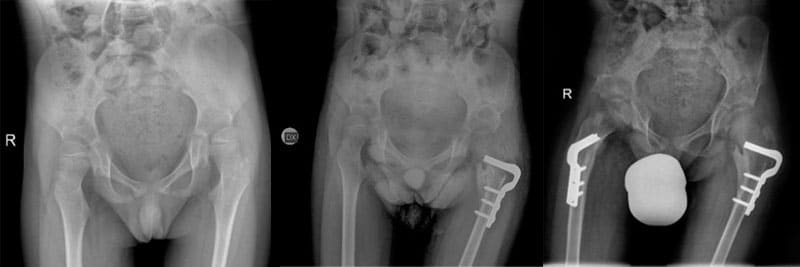Total Hip Reconstruction in Patients with Cerebral Palsy
Total Hip Reconstruction in Patients with Cerebral Palsy
The results of a research carried out by prof. Nicola Portinaro and his team in Humanitas
Within the 103rd National Congress of the Italian Society of Orthopedics and Traumatology, held in Bari from 9 to 12 November 2018, Professor Nicola Portinaro presented the results of a research he conducted at the Humanitas Research Hospital on total hip reconstruction for the treatment of hip dislocation in patients with cerebral palsy.
The aim of the work was to evaluate the results of hip reconstruction as a surgical treatment for hip dislocation in children with cerebral palsy.
The technique used is to redirect the bones of the femur and pelvis after cutting them (osteotomy), in order to regain a congruent hip joint with normal shape and function.
The study, presented by Professor Portinaro during the Congress, involves 66 patients including 45 males and 21 females with mono or bilateral dislocation of the hip. The surgeries were carried out on a total of 74 hip, between January 2007 and December 2015.
The mean age of the patients was approximately 10 years and follow-up was performed over the next 37 months.
Patients underwent preoperative radiographic studies and then after 6 and 12 months, and and each subsequent year.
Patients were also classified according to the Gross Motor Function Classification System (GMFCS) that describes the gross motor function of children and youth with cerebral palsy on the basis of their self-initiated movement such as sitting, walking, and wheeled mobility (walkers, crutches or wheelchairs). Compared to the I to V scale, where I indicates the ability to walk without limitations and V the need to be transported with a manual wheelchair, the patients subjected to intervention were divided as follows:
II 5 patients (7.58%)
III 13 patients (19.70%)
IV 19 patients (28.79%)
V 29 patients (43.94%).
Surgeries were carried out by a multidisciplinary team and a very close-knit team: in fact, these are very big surgical interventions in the field of pediatric orthopedics.
Out of a total 66 interventions, 58 were carried out unilaterally and 8 bilaterally involving both hips.
The results of our study show that this surgery not only improves the shape of the hips, but there is a functional improvement in the patient: personal hygiene in 61 patients (over 90%); sitting in 54 patients (over 80%); while 3 patients even achieved an upgrade of their GMFCS index: 2 went from level IV to level II and one from level III to level II.
This is the first study performed on a statistically significant number of patients affected by PCI and operated with this technique. The results shows that this type of surgery allows these patients to achieve significant improvements in their daily activities, posture and walking.
When you undergo surgery, risks and complications are always frequent, but, as it has been shown in this work, these are limited and not serious cases, compared with the important results that can be achieved in terms of improving living conditions in patients with PCI.

